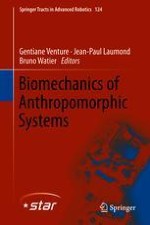2019 | OriginalPaper | Buchkapitel
Motor Compositionality and Timing: Combined Geometrical and Optimization Approaches
verfasst von : Tamar Flash, Matan Karklinsky, Ronit Fuchs, Alain Berthoz, Daniel Bennequin, Yaron Meirovitch
Erschienen in: Biomechanics of Anthropomorphic Systems
Aktivieren Sie unsere intelligente Suche, um passende Fachinhalte oder Patente zu finden.
Wählen Sie Textabschnitte aus um mit Künstlicher Intelligenz passenden Patente zu finden. powered by
Markieren Sie Textabschnitte, um KI-gestützt weitere passende Inhalte zu finden. powered by
